What to choose - warm white light or cool light
Human eyesight is subjected to great stress due to an abundance of gadgets, frequent use of computers and other adverse factors. It is better to organize the right lighting at home, so that it not only meets the standards, but also takes the strain off your eyes and creates optimal conditions for working at a PC, watching TV, etc.
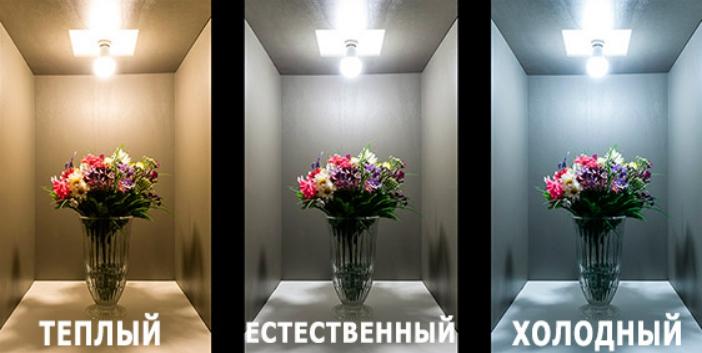
Effects of light temperature on vision
There are a few important points to break down to understand what kind of light and under what conditions will work best. First of all you need to understand what the temperature of light is, how it is measured and what types it is:
- It is a physical concept that is measured in Kelvin (K). For simplicity and convenience, the spectrum is divided into several segments, each with its own color temperature range.
- 2500-3000K is warm yellow lighting, which creates a cozy environment for relaxation.
- 3000-4000K - warm white light that provides a comfortable background for human vision and is used in most living rooms.
- 4000-5000K - neutral white light. Suitable for both residential and office environments. More suitable for work (e.g., cooking or composing documents), but can also be used for everyday use.
- 5000-6500 - Cold white light, very bright, so hardly used in rooms. Allows you to highlight every element of the furnishings, gives it clarity.
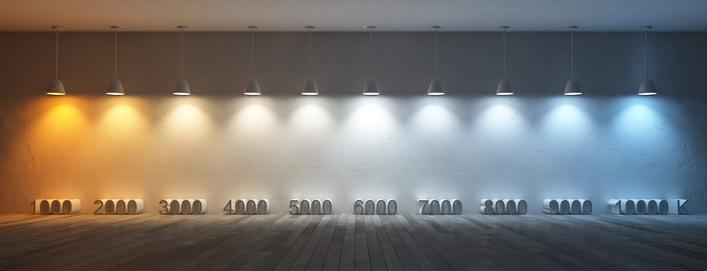
Types of lamps
The type of light depends on the type of lamps used. In addition, it also affects the creation of a comfortable environment, as in some cases the vision is much less tired:
- Incandescent bulbs Have a warm white light, so they are used in any room. Despite the fact that their color temperature is comfortable, it is not very convenient to use such light, because because of the flicker vision gets tired and if you work or read for a long time, you will eventually begin to have problems.
- Halogen - can have either a warm, neutral, or cool spectrum of radiation. They are an order of magnitude better than the first type, but they also use a filament, which means there is flicker of light and a gradual deterioration in quality because the tungsten filament is thinning.
- Fluorescent lamps Give an even warm, neutral or cool light. A good solution that consumes much less electricity, but there are also nuances. In the process of work there is an imperceptible flicker, because of which accumulates fatigue.
- LED options are the most preferred, they can be any color temperature, which allows you to pick the right solution for the room. The lamps provide a uniform background without flicker, so vision fatigue is much less. They are completely safe and do not heat up during operation.
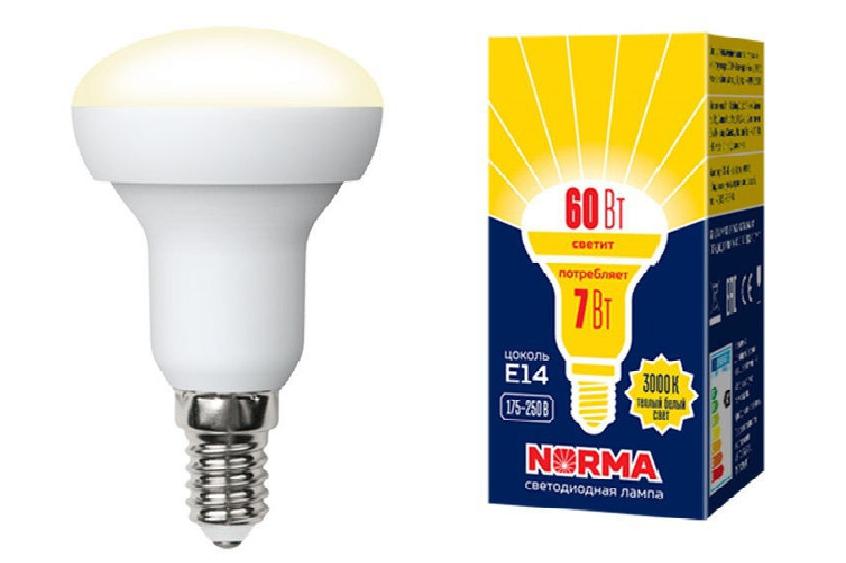
Color temperature is indicated on the LED bulbs, which makes it much easier to buy the right type in the store.
What is the best light for reading and computer
In this case, you should remember that the illumination of the place to read should be about 500 Lumens. From this indicator it is worthwhile to proceed when choosing a light bulb. It is necessary to take into account the following:
- The light should not hit the reader's eyes. If you use a lamp with a plafond, it is necessary that the light flux goes where you need, it is not allowed that the lamp protrudes beyond it. A diffused frosted glass version can be used to create a comfortable reading environment.
- If table lamps or sconces are used, it is better to place them at a distance of 30-60 cm, depending on the type of equipment and its power. If a table is used, it is better to place the light source above it at a height of 25-30 cm.
- Remember that for writing it is necessary to take into account what hand a person writes with. If right, then the light should go to the left, if left, then vice versa.
- The light must not strike the person's face. If a plafond with a directed flow is used, the light should hit the chest area, not higher.
- If the room has dim lighting, it is better to use options with a natural white shade for study or work. They allow you to maintain concentration for a long time and significantly reduce eye fatigue with prolonged reading.
- In a well-lit room for work is better suited to another light - cool white. It will be perceived as neutral. This will highlight the work area, increase productivity and reduce fatigue.
- If you want to create a cozy corner for reading before going to bed or just relaxing with a book, you should use warm white light of such intensity that you don't have to strain your eyes. You should not use cold colors, because they block the production of the sleep hormone melatonin and do not let you relax.
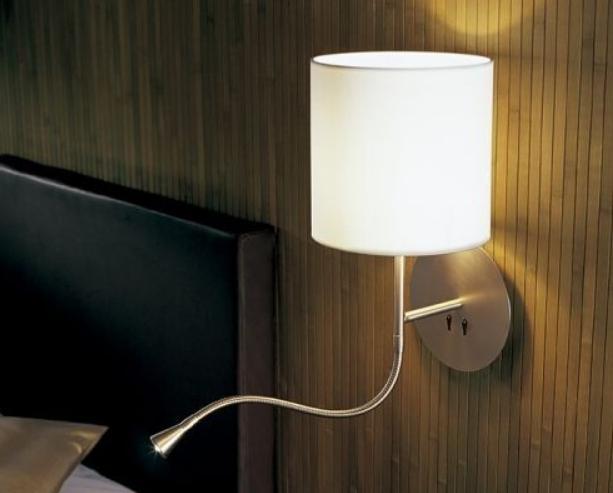
Many people believe that you can work at the computer without light. But it's a mistake, because because of the contrast of the bright screen with the darkness around, the vision is strained much more and fatigue accumulates faster. To create a comfortable environment, you must remember the following:
- Do not direct the light of a desk or any other lamp on the monitor. Reflected from the surface it hits the eyes, which over time leads to visual impairment.
- Do not use very dim or very bright versions. The lighting should be moderate, in the equivalent of an incandescent bulb the 40-60 watt version will do.
- Background lighting is ideal.This diffuses the light and creates a comfortable atmosphere at the desk. The best solution would be LED lights.

Do not forget about the orientation of the lamp depending on the leading hand, for right-handed people to the left, for left-handed people to the right.
Which light to choose
Recommendations for different rooms are different. It all depends on the characteristics of the room, the zoning of the space and other factors. But you can highlight a few recommendations to make it easier to choose the type of light.
For the kitchen
In this case, you can use different solutions to create a comfortable environment:
- Warm light of the lamp, located in the middle, will be suitable for kitchens of small size, which is not difficult to illuminate and one chandelier. It is better to choose options with evenly diffused frosted glass or plastic lamps.
- For those who cook a lot and often, it makes sense to equip additional lighting of the working area. It is better to use natural white light to highlight this part of the room and ensure perfect visibility.
- If additional fixtures are placed for the dining area, it is better to choose lamps with a warm white light. Under it, all the food looks more appetizing and also creates a cozy atmosphere to gather quietly with the family.
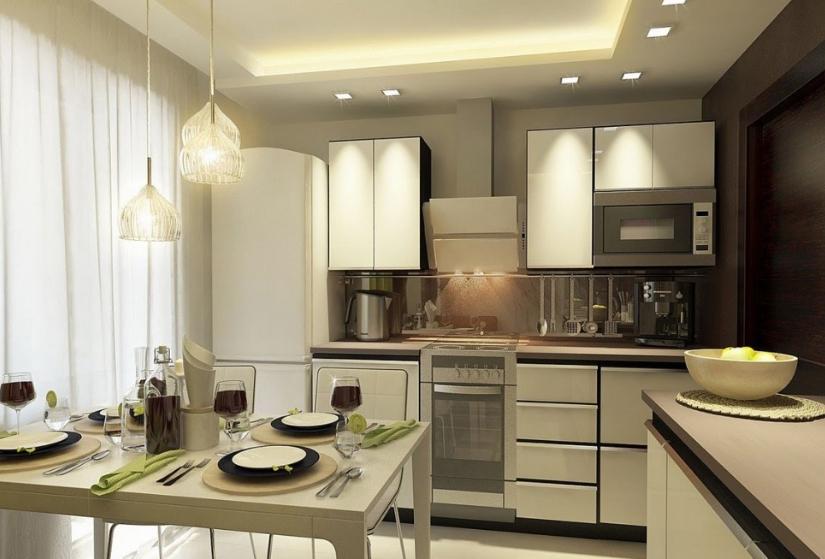
To illuminate the working area of the kitchen, it is most convenient to use LED strip, fixed along the bottom edge of the hinged cabinets. The lighting is of high quality, and electricity consumption is small.
For the living room
The living room is a place of rest and reception of guests, so its lighting should be approached responsibly and done correctly, without missing any important points:
- To create a relaxing and relaxed atmosphere, it is worth using warm white light. A good option with a large chandelier, in which there are several lamps, the number and power depend on the area of the room.
- It is possible to use additional elements - soft ceiling illumination or LED strip, hidden under the projecting plinth. And when highlighting separate areas for reading, receiving guests, needlework, etc. it is worth using spotlights, sconces or floor lamps. It all depends on the specifics of the interior.
- It is best to use options with the ability to choose several modes of lighting. This will allow you to adapt the light to specific conditions and accentuate a particular part of the room, if there is a need.
In modern LED chandeliers, you can adjust not only the number of bulbs burning, but also the color temperature.
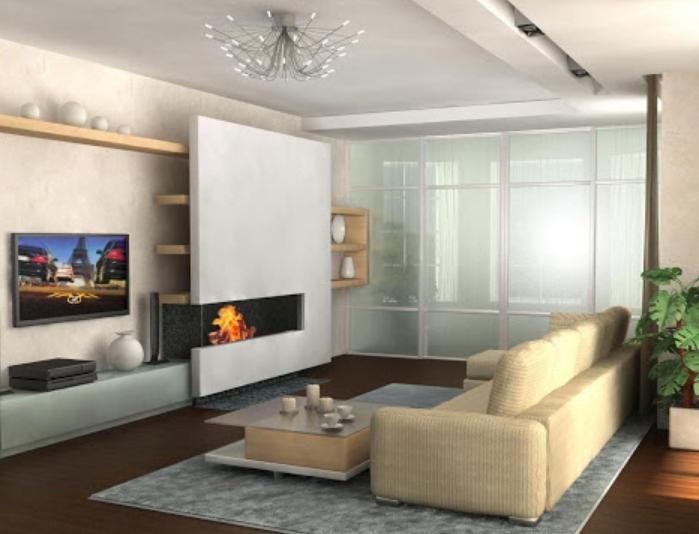
For the bedroom
This room is designed for rest and relaxation, so its lighting should be given special attention. Nothing complicated, if you remember a few simple recommendations:
- Choose warm lighting that will create a calm atmosphere. Preferably with the ability to dim the light even more, so the chandelier should have at least 2 modes.
- For reading in bed, it is better to install a sconce or a bedside floor lamp. It is important that the plafond at least 60 cm.and light scattered evenly, illuminating only half of the bed, so as not to disturb the other person.
- If there is a mirror in the bedroom, you should use lighting with natural white light. It transmits all the shades as accurately as possible, which is important when applying makeup and choosing an outfit. For convenience, lighting can be done in a closet.
- If there is a desk in the bedroom, it is better to buy a lamp to illuminate it, to use when necessary.
In the bedroom, you can abandon the traditional chandelier and put a few recessed lights or use a translucent stretch ceiling with lighting under it.
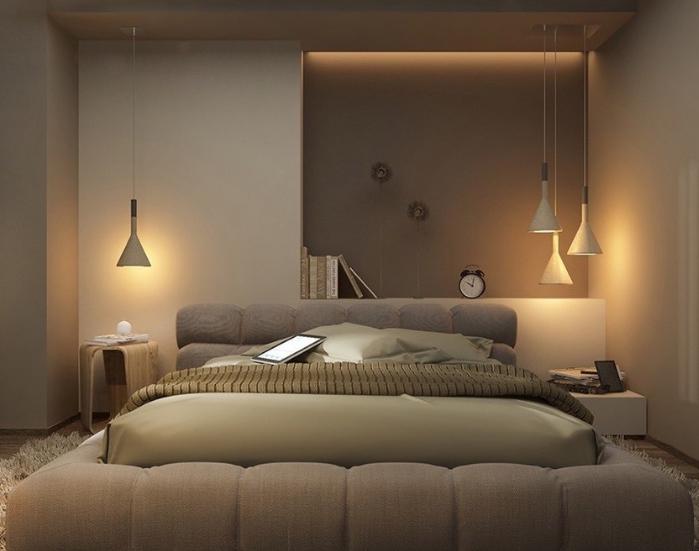
For the children's room
In this room, it is especially important to ensure quality lighting, on it depends the child's vision. It is also necessary to take into account the age of children, it affects the zoning of the room:
- Natural white light is suitable for the play and work zone. Here it is easiest to use additional lighting. It is best to choose LED bulbs, which do not flicker and have the least effect on vision.
- The common light should be warm white, so that the room feels cozy and calm, and the colors of the furniture and other items are transmitted naturally. Use chandeliers or light fixtures with diffusing plafonds to avoid direct light bulbs in the eyes.
- You can install a soft ceiling light and turn it on at night as a nightlight. This is a great solution that consumes little electricity and can be adjusted in both brightness and color.
By the way! For a child's desk, pick safe lights with LEDs that can be adjusted as desired.
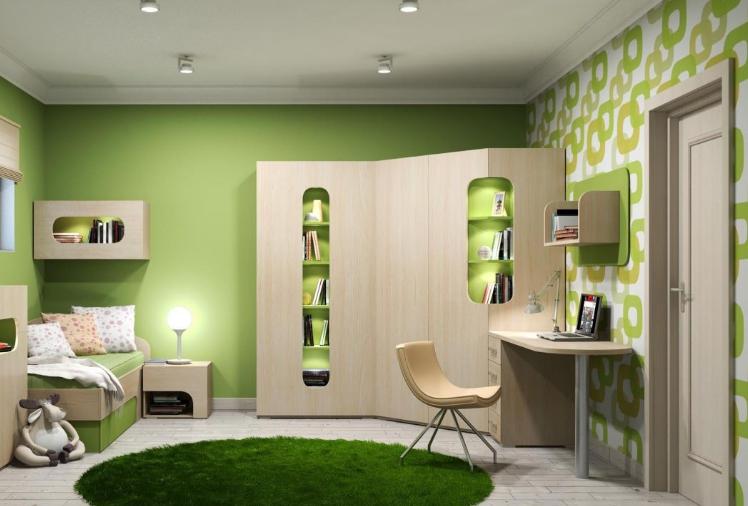
Can different color temperatures be combined in the same room?
If you use simple tips, you can intelligently combine two types of light in a room and still create a comfortable environment that looks attractive. One thing to remember:
- Combine only adjacent tones. That is, there will always be neutral or natural white light. The latter can be both warm and cold shades, but combining them with each other is by no means possible. Knowing this rule, you can begin planning the lighting.
- If warm white lighting is the main option in the room, you can use a natural shade to accentuate certain elements. For example, highlight pictures on the wall, figurines, elements of the collection, unusual wall texture, etc. with the help of spotlights. Due to this method you can direct the attention where it is necessary.
- Lamps with different color temperatures can help to differentiate functional areas in one room. Or divide the space in a studio apartment or living room combined with a kitchen. Here it is very important to arrange the light so that the light from them does not intersect with the neighboring ones, which have a different shade.
- You can create different lighting schemes. For example, if the living room is used as a study, then a natural shade is suitable, and when it serves as a place to relax and receive guests, a warm light would be optimal. It is important that each circuit is turned on independently.
In order not to make a circuit for two modes, it is easier to install a chandelier with light temperature control. Then you can do it with a remote control in a few seconds.
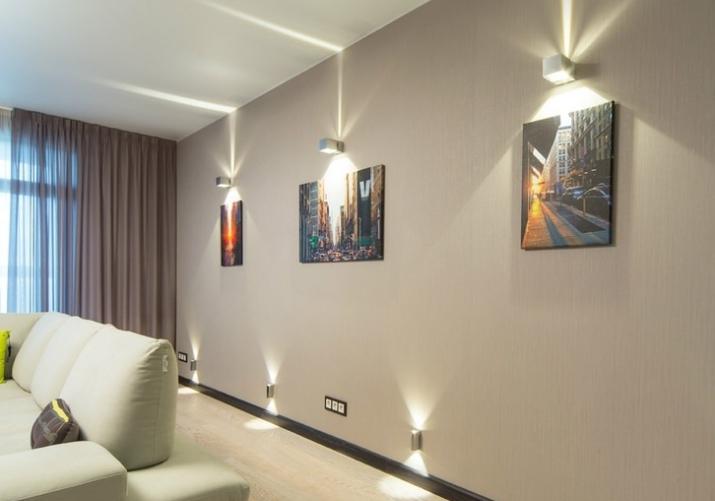
How color temperature affects well-being
More than 80% of the information a person absorbs via sight. Not only perception, but also biorhythms and hormone production depends on the lighting. So as not to make a mistake when choosing the right light, we have to remember some simple guidelines:
- In the workspace it is better to use cool or neutral white light. It sets up for productive work and does not let you relax. The main thing - to pick up the shade that will be comfortable for the eyes.
- For needlework and other creative work the natural shade is suitable, because it transmits colors as accurately as possible and allows you to see everything in detail. At the same time it reduces eye fatigue.
- In living rooms and kitchens, it is better to use warm white light, as it brings peace and promotes comfortable rest and healthy appetite.
- For the bedroom, choose warm, subdued lighting options. This improves melatonin production and normalizes sleep.
Too bright light causes neuroses and headaches because the visual muscles are overstrained.
Warm white light is the most versatile type of lighting, which is suitable for most rooms and creates a comfortable environment for people. It can be used to accentuate the beauty of an interior, because the colors look rich and natural.